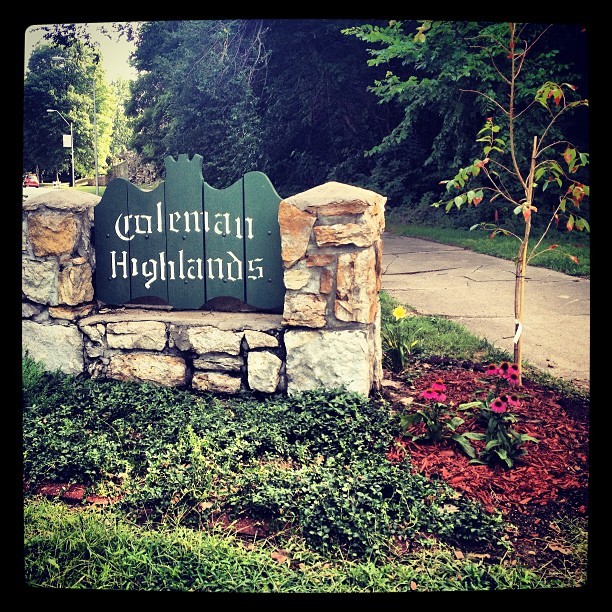The Coleman Highlands neighborhood sits on 80 acres that was once part of a large parcel of land owned by William Gilliss, one of Kansas City’s founding fathers and a prominent 19th century businessman. He sold the land in 1869 to William T. Coleman for $10,000 and the property once known as the Gillis Farm became Coleman Meadow. Not much is known about Coleman, except that he eventually moved to San Francisco with his wife, Carrie. When Coleman and his wife died in 1895 and 1896, most of their estate passed on to their son, Robert Lewis Coleman and a grandson, William Tell Coleman.
The Coleman Highlands neighborhood was platted by Robert Coleman in August of 1907. The location was ideal for a new suburb—atop a bluff, with fresh air and cool breezes, and located near streetcar connections to downtown, the west bottoms and Westport. The original plat divided the Coleman farm into 293 lots. Most houses were built between 1908 and World War I and a second wave of construction occurred between World War I and World War II. These homes were built in a variety of styles that included Colonial Revival, Craftsman, Prairie, Bungalow and Kansas City Shirtwaist. During the early 1950s, a third wave of construction occurred in the neighborhood, primarily of Ranch houses in an area just north of West Coleman Road and 33rd Street, where a ravine was filled in and levelled during 1945.
The early residents of Coleman Highlands represented a cross section of middle and upper middle class occupations that included business owners, physicians, salesmen and teachers. A number of residents today are second or third generation neighborhood inhabitants. Early developers and builders associated with the neighborhood also lived here. Ralph P. Swofford, owner and president of the Swofford Investments and Swofford Realty firms, and his father, James J. Swofford, lived in a number of houses in the neighborhood. Godfrey Swenson, a builder of many Coleman Highland houses, had two homes here and Robert C. Long of the Long Lumber Company also lived here.
Deed covenants were included in the sale of the original Coleman Highlands lots. These required that only single family houses that cost at least $3500 could be built. The original covenants also restricted minorities from purchasing property, a restriction that was not listed when the covenants were renewed in 1923. The Coleman Highlands neighborhood retains much of its original character, thanks to vigilant protection of the single family ownership clause.

